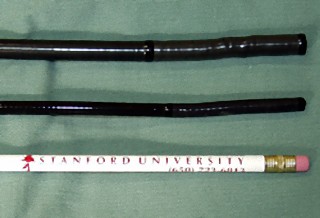The drawbacks of using a sedative when performing an endoscopy
At our clinic we recommend patients who do not have a serious illness to undergo an endoscopy examination with the use of a sedative to ease the discomfort. Comparatively speaking, the exam can be preformed without a sedative, but generally they are used, however there are several problems that can arise.
Patients do not quickly regain consciousness
Once the examination is complete the patient does not quickly wake up. Most patients require thirty minutes or more to regain alertness, some even sleep for more than two hours. During the day of the examination, it would be (ideal) appropriate to take the day off from work, however in today’s busy society this may not always be possible. Just a few days ago, at a different hospital I, myself underwent an endoscopy (upper body and substructure were examined) with the aid of a sedative. During the examination I was at complete ease. I felt no pain. Actually I don’t remember anything. I couldn’t even remember the results of the examination, I returned home and felt I was in a daze. My day was completely wasted. The point to be made is; in the case where a patient must drive a car, or return to an important job after the examination, using a sedative is not recommended.
A burden on the heart
At our clinic we monitor the patients pulse, oxygen saturation, and blood pressure during the examination. By doing this, we can compare the patient’s blood pressure and pulse rate, as they do increase during the examination. When we use a sedative, the patient rarely complains that he or she feels any pain. This is particularly the case when we examine the esophagus, stomach, and duodenum. This operation is very safe however; in the case of a patient with a heart complication we must use discretion as to what type of sedative to use.
Transnasal Endoscope
In recent years inserting the endoscope into the nasal cavity has taken the spotlight in the medical world. This nasal insertion technique requires an extremely tiny and frail endoscope, measuring only 6mm in diameter. At first glance this examination may seem odd, however if you think about it this is a revolutionary method of examining a patient. The reason we insert the endoscope directly into the nasal cavity is because there is a clean entry to the esophagus. Compared to inserting the endoscope into the mouth, the transnasal endoscope allows us to avoid irritating the throat and pharynx. Everyone has experienced the unpleasant feeling of sticking a finger down the throat; this is the exact same feeling a patient must endure when the endoscope is inserted into the mouth. It is completely normal to hear, a grunt or ‘yuck-’ when the term “stomach camera” comes up in conversation. It goes without saying, regardless of the physician’s level of expertise, any patient will react with an unpleasant remark while undergoing this examination. At our clinic we took all of this into account, and after a bit of hesitation finally decided to use the transnasal endoscope, our only worry was the quality of the video. However spring 2005, we purchased a transnasal endoscope that we are more than satisfied with, if you would like further detailed information about what instruments we currently use, please follow this link.
Transnasal Endoscope|FUJIFILM Medical http://www.hanakara.jp Japanese
New models of the transnasal endoscope have been introduced and we have seen dramatically improved image quality in recent years. The essential test itself can be done without any stress for the patient. The thin, flexible endoscope overcomes the need to counteract movement of the stomach, therefore muscle relaxers via injection are not needed. It is now possible to be examined without any sedation at all, so we can recommended this endoscope with confidence even to patients with serious heart conditions. In the future, we hope to make transnasal endoscopes the first choice for patients. However, until the quality equals or surpasses that of the traditional oral endoscope, it will be used for biopsy and observation, and not treatment. Therefore, whether or not to use the nasal endoscope is based on the patient's current situation, general condition, of course, choice.

Picture information
Top is the oral endoscope,
bottom the transnasal endoscope.
As you can see the tip is smaller than the tip of a pencil.

